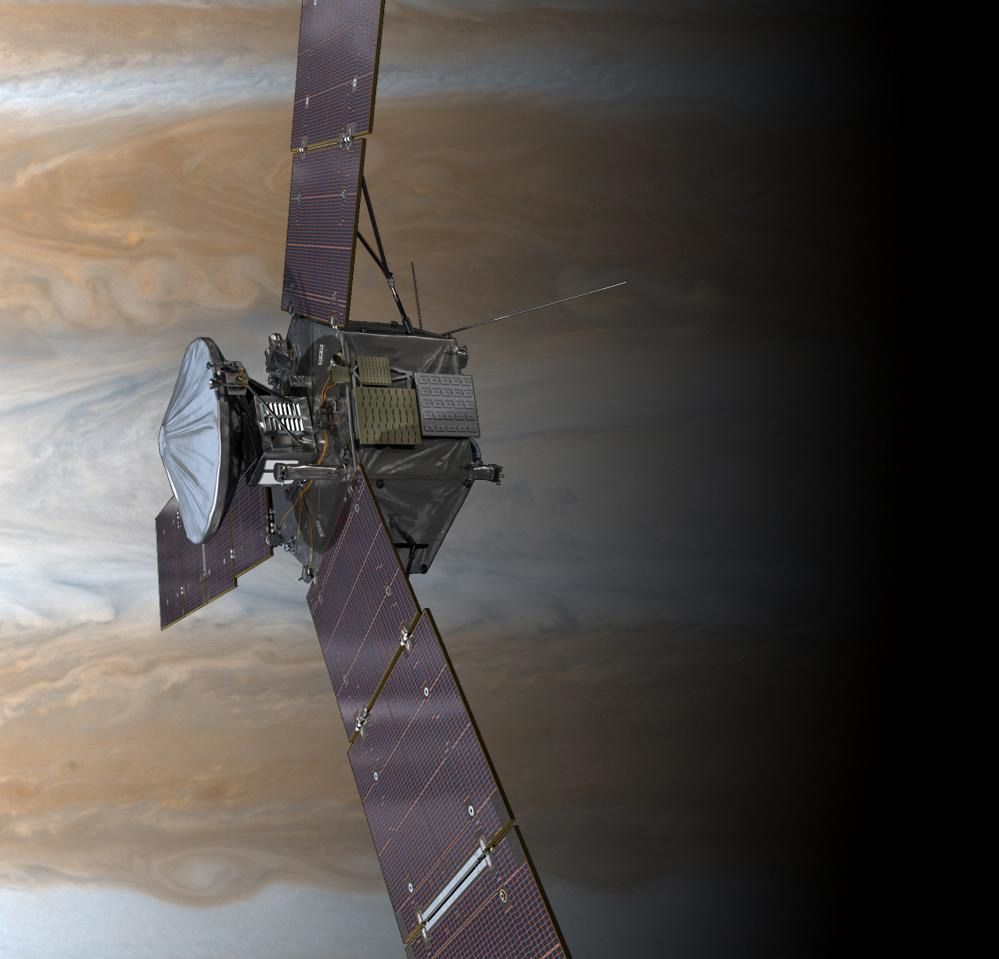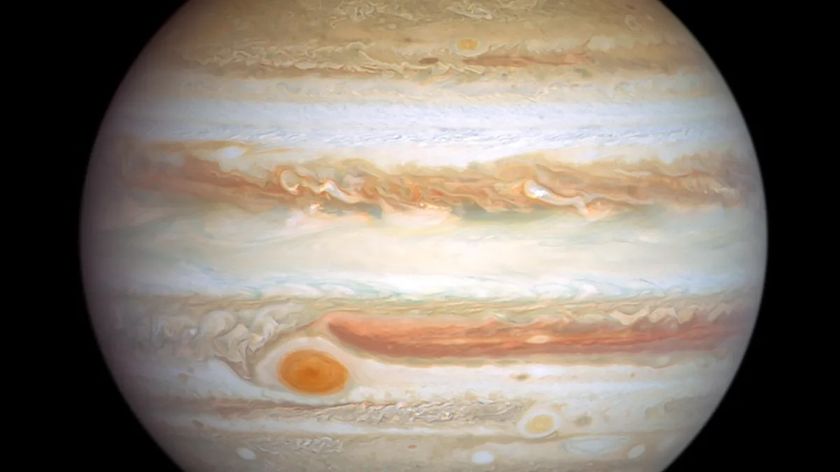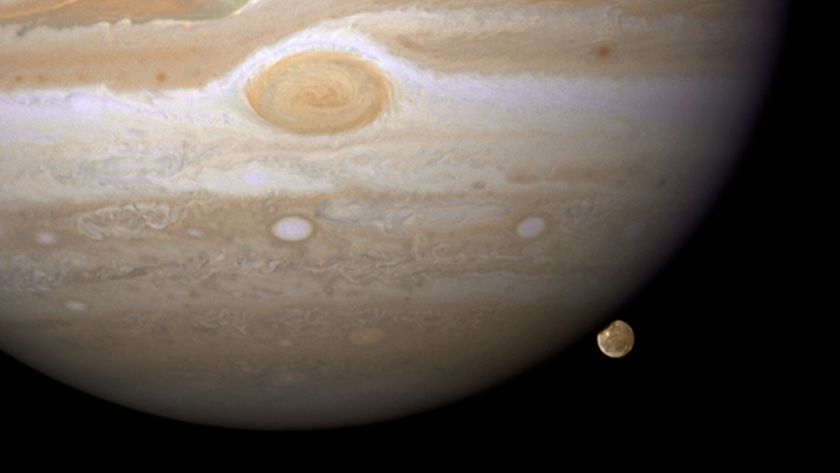Jupiter-Bound NASA Probe Adjusts Course Toward Giant Planet

A NASA probe on a five-year mission to Jupiter fired up its rocket thrusters this week to better aim itself at the largest planet in our solar system.
The Juno spacecraft performed the course adjustment on Wednesday (Feb. 1), marking the first of up to 12 planned maneuvers to stay on track during its 1.7 billion-mile (2.8 billion-kilometer) flight to Jupiter, mission managers said.
NASA launched the $1.1 billion Juno probe toward Jupiter in August 2011 atop an Atlas 5 rocket. The spacecraft has been streaking through space ever since. So far, it has traveled about 279 million miles (449 million km) in the 182 days since liftoff. The probe is expected to arrive at Jupiter in August 2016.
"We had a maneuver planned soon after launch but our Atlas 5 rocket gave us such a good ride we didn't need to make any trajectory changes," said Juno project manager Rick Nybakken of NASA's Jet Propulsion Laboratory in Pasadena, Calif. "It is good to get another first under our belt. This burn couldn't have gone any better."
During this week's course adjustment, Juno fired its thrusters for 25 minutes, beginning at 1:10 p.m. EST (1810 GMT). The engine burn consumed about 6.9 pounds (3.1 kilograms) of fuel, mission managers said. [Photos: NASA's Juno Mission to Jupiter]
The next major course correction for Juno is scheduled for this August, when the probe will perform the first of two deep space maneuvers to prepare for a flyby of Earth in October 2013. Juno will whip around Earth during that flyby, using the planet's gravity to boost its speed in order to reach Jupiter by 2016.
The 8,000-pound (3,267-kg) Juno probe is the first solar-powered spacecraft ever to visit the outer solar system. The spacecraft has three huge solar arrays, each of which is the size of a tractor-trailer. It will orbit Jupiter in an extremely elliptical polar orbit that will bring the spacecraft within 3,107 miles (5,000 km) of the planet's cloud tops at the closest point.
Sign up for the Live Science daily newsletter now
Get the world’s most fascinating discoveries delivered straight to your inbox.
The spacecraft is named after the goddess Juno in Greek and Roman mythology. In the myth, the god Jupiter used clouds to hide his acts of mischief, but his wife Juno was able to peer through the veil to see her husband's antics, according to a NASA description.
Like the mythical goddess, the Juno spacecraft is designed to peer through the planet Jupiter's dense clouds and use eight science instruments to study the gas giant's atmosphere, internal structure and magnetic field. The probe will orbit Jupiter 33 times over the course of one Earth year.
At the end of its mission, Juno will then intentionally crash itself through the planet's atmosphere to avoid contaminating any of the moons orbiting the gas giant.
This article was provided by SPACE.com, a sister site to LiveScience. Follow SPACE.com for the latest in space science and exploration news on Twitter @Spacedotcom and on Facebook.













